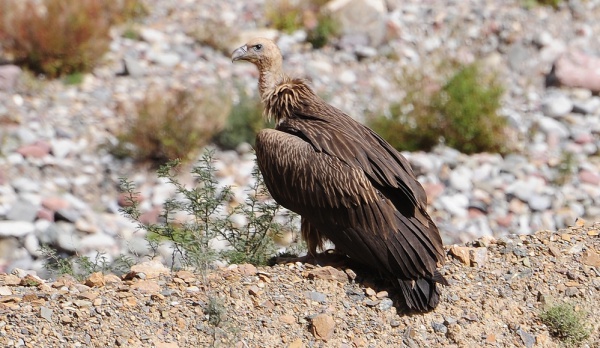Facts About Himalayan vulture
The Himalayan vulture, also known as the Himalayan griffon vulture, is a majestic bird that resides in the towering peaks of the Himalayas and the Tibetan Plateau. As one of the largest vultures and true raptors, it is classified as Near Threatened on the IUCN Red List. These birds are easily recognizable by their impressive size and distinct features: adults have a long pale brown ruff, a yellowish bill, and pale blue facial skin. In flight, their dark wing and tail feathers contrast sharply with their pale bodies, making them particularly easy to identify.
These vultures prefer the high-altitude regions of the Himalayas, the Pamirs, Kazakhstan, and the Tibetan Plateau. Young birds often venture further south, with sightings reported in places such as Thailand, Burma, Singapore, and Cambodia. As nature's clean-up crew, Himalayan vultures feed exclusively on carrion, showing a preference for the fleshy parts of carcasses. They can be quite territorial around other scavengers, yet defer to larger predators like wolves and snow leopards.
Breeding season for these birds commences in January. They build their nests on cliff ledges, often forming colonies with multiple pairs nesting on the same cliff face. Each breeding pair lays a single white egg adorned with red splotches. Unfortunately, the species faces threats such as poisoning from diclofenac, a drug present in the carcasses of domestic animals. Although their population decline has not been as swift as that of other Gyps vultures, it remains a significant concern for their conservation.

 China
China